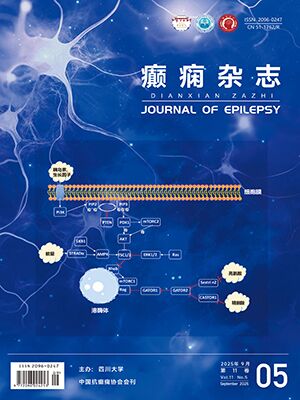| 1. |
Semple BD, Zamani A, Rayner G, et al. Affective, neurocognitive and psychosocial disorders associated with traumatic brain injury and post-traumatic epilepsy. Neurobiology of Disease, 2019, 123: 27-41.
|
| 2. |
Liu SY, Han XM, Yan YY, et al. Quality of life and its influencing factors in patients with post-traumatic epilepsy. Chinese Journal of Traumatology, 2011, 14(2): 100-103.
|
| 3. |
郭起浩, 呂傳真, 洪震. 聽覺詞語記憶測驗在中國老人中的試用分析. 中國心理衛生雜志, 2001, 15(1): 13-15.
|
| 4. |
郭起浩, 呂傳真, 洪震. Rey-Osterrith復雜圖形測驗在中國正常老人中的應用. 中國臨床心理學雜志, 2000, 8(4): 205-207.
|
| 5. |
陸駿超, 郭起浩, 洪震. 連線測驗(中文修訂版)在早期識別阿爾茲海默病中的作用. 中國臨床心理學雜志, 2006, 14(2): 118-120.
|
| 6. |
Asikainen I, Kaste M, Sarna S. Early and late posttraumatic seizures in traumatic brain injury rehabilitation patients: brain injury factors causing late seizures and influence of seizures on long-term outcome. Epilepsia, 1999, 40(5): 584-589.
|
| 7. |
Englander J, Bushnik T, Duong TT, et al. Analyzing risk factors for late posttraumatic seizures: a prospective, multicenter investigation. Archives of Physical Medicine and Rehabilitation, 2003, 84(3): 365-373.
|
| 8. |
Bushnik T, Englander J, Wright J, et al. Traumatic brain injury with and without late posttraumatic seizures. Journal of Head Trauma Rehabilitation, 2012, 27(6): E36-E44.
|
| 9. |
Mazzini L, Cossa FM, Angelino E, et al. Posttraumatic epilepsy: neuroradiologic and neuropsychological assessment of long-term outcome. Epilepsia, 2003, 44(4): 569-574.
|
| 10. |
虞培敏, 郭起浩, 丁玎, 等. 癲癇患者認知功能影響因素的研究. 中國臨床神經科學, 2007, 15(1): 41-45.
|
| 11. |
劉陽, 孫濤, 徐文中, 等. 75例癲癇患者認知功能與影響因素分析. 臨床神經外科雜志, 2014, 11(6): 409-411.
|
| 12. |
郭韜, 張波, 武江, 等. 藥物難治性額葉、顳葉癲癇患者認知功能評估及影響因素對照分析. 中華神經醫學雜志, 2016, 15(10): 1004-1010.
|
| 13. |
Elger CE, Helmstaedter C, Kurthen M. Chronic epilepsy and cognition. The Lancet Neurology, 2004, 3(11): 663-672.
|
| 14. |
Meador KJ. Cognitive outcomes and predictive factors in epilepsy. Neurology, 2002, 58(8): S21-26.
|
| 15. |
Piccenna L, Shears G, O’Brien TJ. Management of post-traumatic epilepsy: an evidence review over the last 5 years and future directions. Epilepsia Open, 2017, 2(2): 123-144.
|
| 16. |
Hunt RF, Boychuk JA, Smith BN. Neural circuit mechanisms of post–traumatic epilepsy. Frontiers in Cellular Neuroscience, 2013, 18(7): 89.
|
| 17. |
Rosenbaum RS, Moscovitch M, Foster JK, et al. Patterns of autobiographic memory loss in medial-temporal lobe amnesic patients. Journal of Cognitive Neuroscience, 2008, 20(8): 1490-1506.
|
| 18. |
郭翠萍, 席春華, 朱幼玲, 等. 輕度認知功能損害患者的執行能力和工作記憶研究. 中華神經科雜志, 2009, 42(4): 237-240.
|
| 19. |
Lucke-Wold BP, Nguyen L, Turner RC, et al. Traumatic brain injury and epilepsy: Underlying mechanisms leading to seizure. Seizure, 2015, 33: 13-23.
|
| 20. |
Ventre-Dominey J, Bailly A, Lavenne F, et al. Double dissociation in neural correlates of visual working memory: a PET study. Cognitive Brain Research, 2005, 25(3): 747-759.
|
| 21. |
Helmstaedter C, Witt JA, Ortinski P, et al. Comments on cognitive side effects of antiepileptic drugs. Epilepsy & Behavior, 2004, 5(Suppl. 1): 60-65. Epilepsy & Behavior, 2014, 40: 29-31.
|




